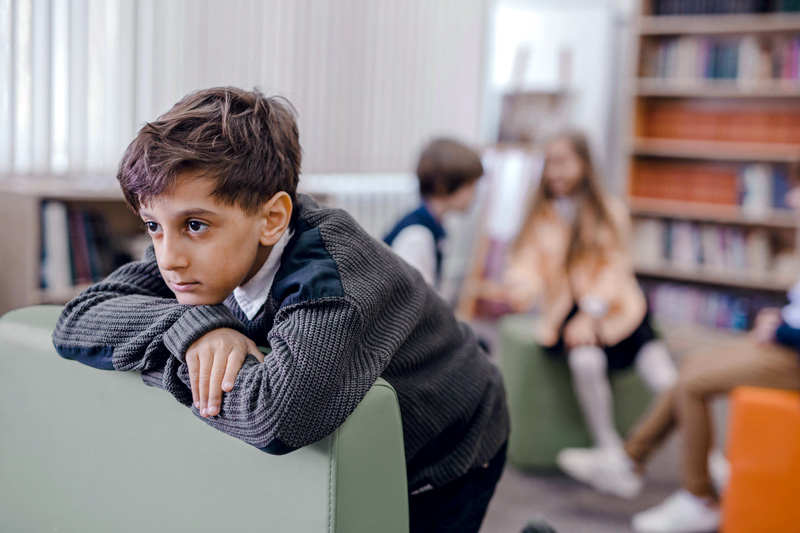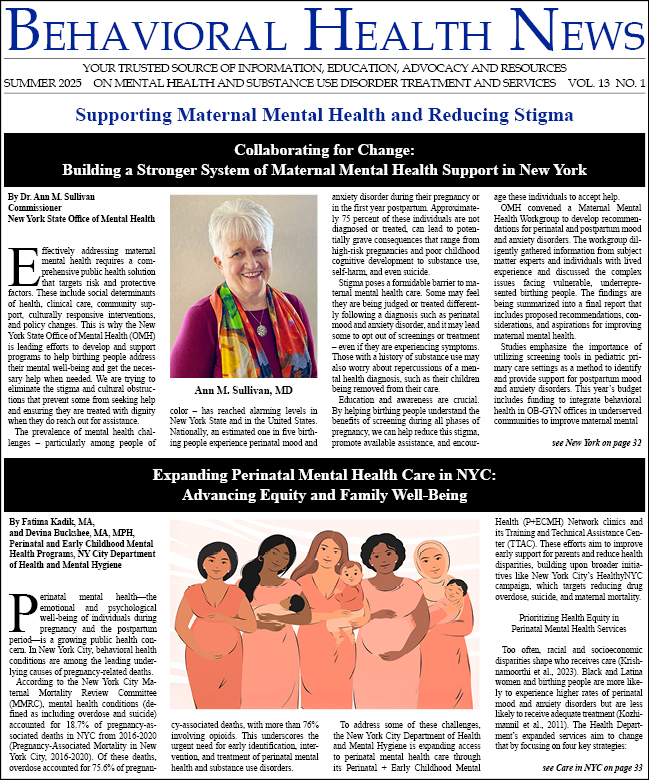*This is a composite case example. The names have been changed to protect the identities of the clients.
Loneliness is not simply a feeling but a social determinant of one’s overall health. Loneliness is a state of emotional distress that develops when one experiences a disconnect between their desire for social connection and their lived experiences. When discussing the importance of addressing loneliness, the conversation is often centered on older adults. However, the American epidemic of loneliness is also impacting children and youth at alarming rates.

Chronic loneliness in children and youth can have lasting mental health effects.
Among Generation Z, 73% percent reported feeling alone sometimes or constantly (Bakhtiari, 2023). Additionally, a recent report found that 1 in 5 parents of Generation Alpha stated that their children have few or no friends (C.S. Moss Children’s Hospital, 2024). Experiencing chronic loneliness during this critical developmental period increases their risk for mental health issues, substance abuse, poor interpersonal skills, and low self-esteem (Xerxa, 2023). By integrating family-based interventions into treatment with children and adolescents, clinicians can assist in strengthening the family bond in order to mitigate long-term potential negative outcomes of loneliness.
Recognizing Child & Youth Loneliness
While the feeling of loneliness is considered a normal emotion and a part of the human experience, increased and chronic feelings of being lonely have dire physical and mental health consequences (Yanguas et al., 2018). Therefore, in order to properly address loneliness in our youth, clinicians must be able to recognize the signs and symptoms of loneliness. For instance, one can view a child as being aggressive as a symptom of trauma; however, there is a strong correlation between feelings of being lonely and aggression. Children who have experienced feelings of isolation and disconnectedness from others often act out aggressively as a means to cope with an unmet need for connection (Almeida et al., 2021). Additionally, children and youth who have suffered from emotional neglect often lack the social skills to build social connections. These children may present as shy, timid, lacking self-confidence, anxious, and may engage in increased people-pleasing behavior.
Moreover, if young clients express a strong dislike for school, further assessment of social isolation should be conducted. Being bullied as a child or adolescent is a form of social exclusion that has been found to increase the risk of loneliness around ten times higher than their peers (Madsen, 2024). Experiencing being victimized by others can cause them to want to avoid social settings like school since they view them as unsafe spaces. Lastly, impoverished children and youth are twice as likely to experience feelings of loneliness due to the forced isolation of poverty (Akgül et al., 2023). Low-income families may be unable to afford social activities, such as field trips and sports, which can lead to social exclusion. Also, families living in disadvantaged communities may have fewer safe spaces for their children to socialize.
Intervention Strategies & Recommendations
While the answer to dramatically reducing the rates of loneliness in children and youth is multifaceted, family-based treatment can have a lasting impact. Merging the principles of Narrative and Strategic Family Therapy, the clinician can utilize the strengths of both interventions to aid families in nourishing the family bond, building connections, and eliminating chronic loneliness.
- Externalizing Problem. One of the core elements of Narrative Family Therapy is identifying the problem(s) that the family is experiencing and building a detached perspective. The family is taught to discuss the problem as something separate from not only themselves but also separate from other members of the family.
- Identifying Patterns. A principle of Strategic Family Therapy is assisting the family in identifying dysfunctional behaviors and communication styles that reinforce the presenting problem. The clinician actively observes the family while paying attention to emotional exchanges verbal and nonverbal communication.
- Empowering Your Voice. Another useful approach of Narrative Family Therapy is working with each family member to discover their voice. Each family member should have the space to share their perspective and contribute to the narrative shift.
- Direct Interventions. Lastly, one of the core elements of Strategic Family is for the clinician to instruct the family to change behaviors in direct ways, such as giving family members clear tasks and/or directives in order to change the dysfunctional patterns that were identified.
Case Exploration
Bella* is a 12-year-old girl of Hispanic descent who was referred to a community-based mental health clinic by her school due to her misbehavior. In school, Bella would talk back to teachers, display aggressiveness toward her peers, and often refuse to do her work by tearing paper or leaving the classroom. Her mother reported similar behaviors at home, with aggression towards her siblings and poor impulse control. Bella was the youngest of three sisters who she lived with, along with her mother and stepfather. Bella’s mother stated that her “tantrums” could last for hours when she did not get what she wanted, and other times she was withdrawn at home. Also, her mother stated that during her emotional outbursts, Bella would often state that “no one cares about her.”
After working and assessing Bella, the author was able to determine that Bella suffered from chronic loneliness. At school, Bella did not have any peers that she considered consistent friends. She reported being bullied by her peers, with them laughing and making offensive comments about her weight. Bella claimed that the bullying would often trigger her outbursts at school. Through collaboration with her school, her school counselor confirmed that Bella had few friends, would often eat lunch by herself, and would be alone during social activities. At home, while Bella has siblings, they are several years apart in age, so she lacked the attention that she needed, which further contributed to feelings of loneliness. Her birth father had been absent for the past few years, leading to feelings of abandonment and rejection. Bella expressed feeling as though she had no one in the home that understood her. Working individually with Bella and conducting family sessions, the author was able to reduce Bella’s symptoms with the following family-based intervention steps:
- Externalizing Problem. Using this method, the author worked with Bella and her family on the importance of language. Bella was often called “bad” because of her behavior, which she then internalized. The family was encouraged to externalize Bella’s misbehavior in order to avoid future incidents of Bella feeling othered and/or rejected.
- Identifying Patterns. The principle was used to identify negative patterns at home that were reinforcing Bellas’s behavior. For instance, Bella received a lot of attention when she engaged in misbehavior but rarely received attention for positive behavior. When she did show improvements, they were not acknowledged by the family. Due to her feelings of loneliness, attention, even if negative, was better than not receiving attention at all, therefore leading to emotional outbursts.
- Empowering Your Voice. When working with the family, each member was given time and attention to share their thoughts and feelings. This method modeled to the family the importance of each member of the family feeling heard and allowed the other family members to understand how their actions impacted each other.
- Direct Interventions. The family members were given directive measures in order to build connections. For instance, they were advised to start having daily family time, such as family meals, movie nights, game nights, etc. In addition, each day, they all had to share their “high/low” for the day with each other. Also, Bella’s mom and stepfather were strongly encouraged to spend individual time with each child equally throughout the week.
After a few months of consistent family engagement in treatment, Bella saw great improvements. She reported reduced feelings of loneliness, better impulse control, and less emotional outbursts. Through collaboration with her school, they reported that Bella was less aggressive, which led to building relationships with her peers.
Family engagement in mental health treatment is paramount in order to improve the mental health of children and adolescents. Through innovative, evidence-based practices, we can combat the public health crisis of loneliness within our communities.
Dr. Eboni Wooley, DSW, LCSW, is a psychotherapist in New York City and an adjunct professor at New York University. To contact Eboni Wooley, DSW, LCSW, email edw303@nyu.edu.
References
Akgül, H., Güven, A. Z., Güven, S., & Ceylan, M. (2023). Loneliness, Social Support, Social Trust, and Subjective Wellness in Low-Income Children: A Longitudinal Approach. Children (Basel, Switzerland), 10(9), 1433. https://doi.org/10.3390/children10091433
Almeida, I. L. L., Rego, J. F., Teixeira, A. C. G., & Moreira, M. R. (2021). Social isolation and its impact on child and adolescent development: a systematic review. Revista paulista de pediatria : orgao oficial da Sociedade de Pediatria de Sao Paulo, 40, e2020385. https://doi.org/10.1590/1984-0462/2022/40/2020385
Bakhtiari, K. (2023, July 28). Gen-Z, The Loneliness Epidemic And The Unifying Power Of Brands. Forbes. https://www.forbes.com/sites/kianbakhtiari/2023/07/28/gen-z-the-loneliness-epidemic-and-the-unifying-power-of-brands/
C.S. Moss Children’s Hospital. (2024). Facilitating friendships: Parents’ role. (Mott Poll Report). University of Michigan Health. https://mottpoll.org/reports/facilitating-friendships-parents-role
Madsen, K. R., Damsgaard, M. T., Petersen, K., Qualter, P., & Holstein, B. E. (2024). Bullying at School, Cyberbullying, and Loneliness: National Representative Study of Adolescents in Denmark. International journal of environmental research and public health, 21(4), 414. https://doi.org/10.3390/ijerph21040414
Yanguas, J., Pinazo-Henandis, S., & Tarazona-Santabalbina, F. J. (2018). The complexity of loneliness. Acta bio-medica : Atenei Parmensis, 89(2), 302–314. https://doi.org/10.23750/abm.v89i2.7404
Xerxa, Y., Rescorla, L. A., Shanahan, L., Tiemeier, H., & Copeland, W. E. (2023). Childhood loneliness as a specific risk factor for adult psychiatric disorders. Psychological medicine, 53(1), 227–235. https://doi.org/10.1017/S0033291721001422






